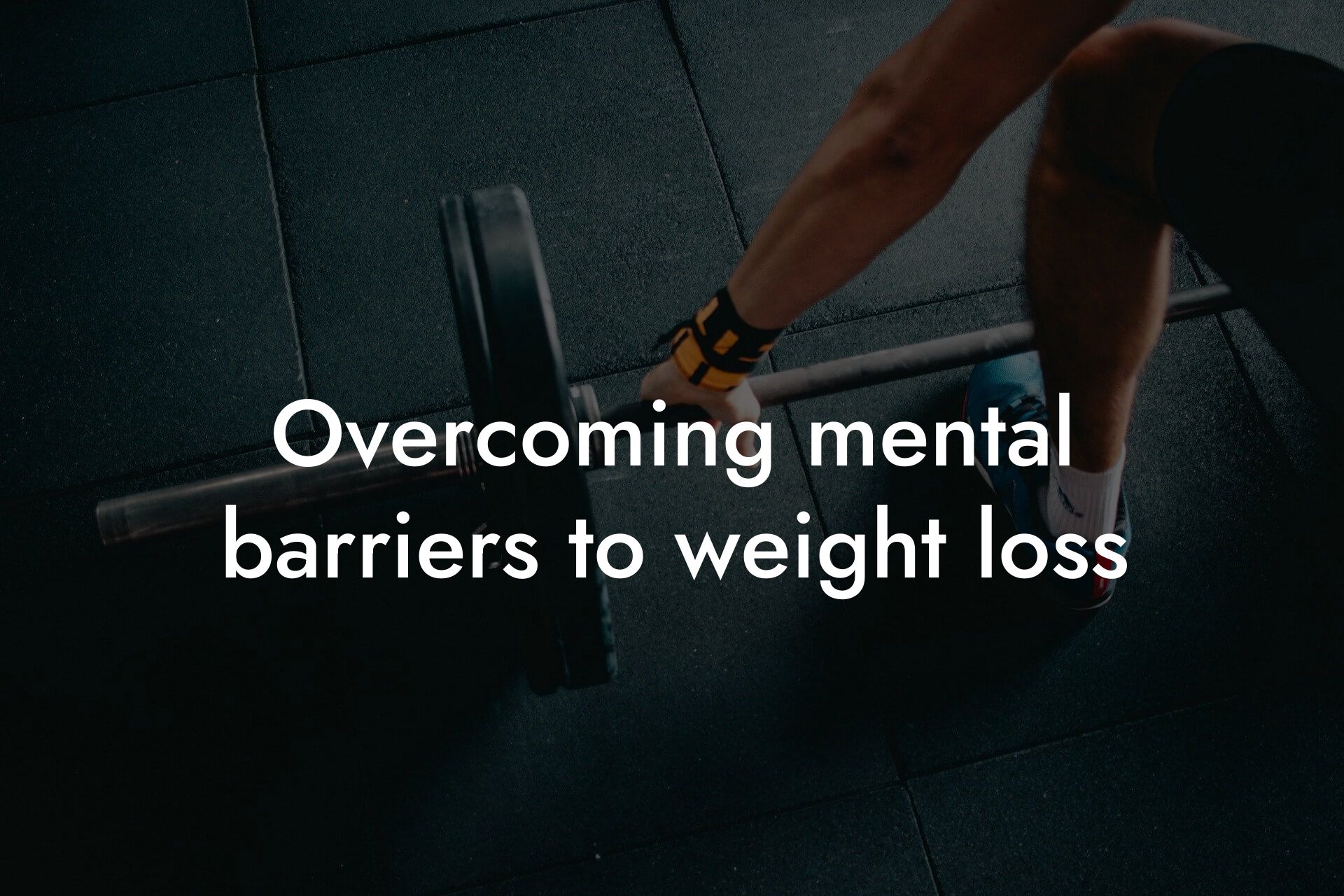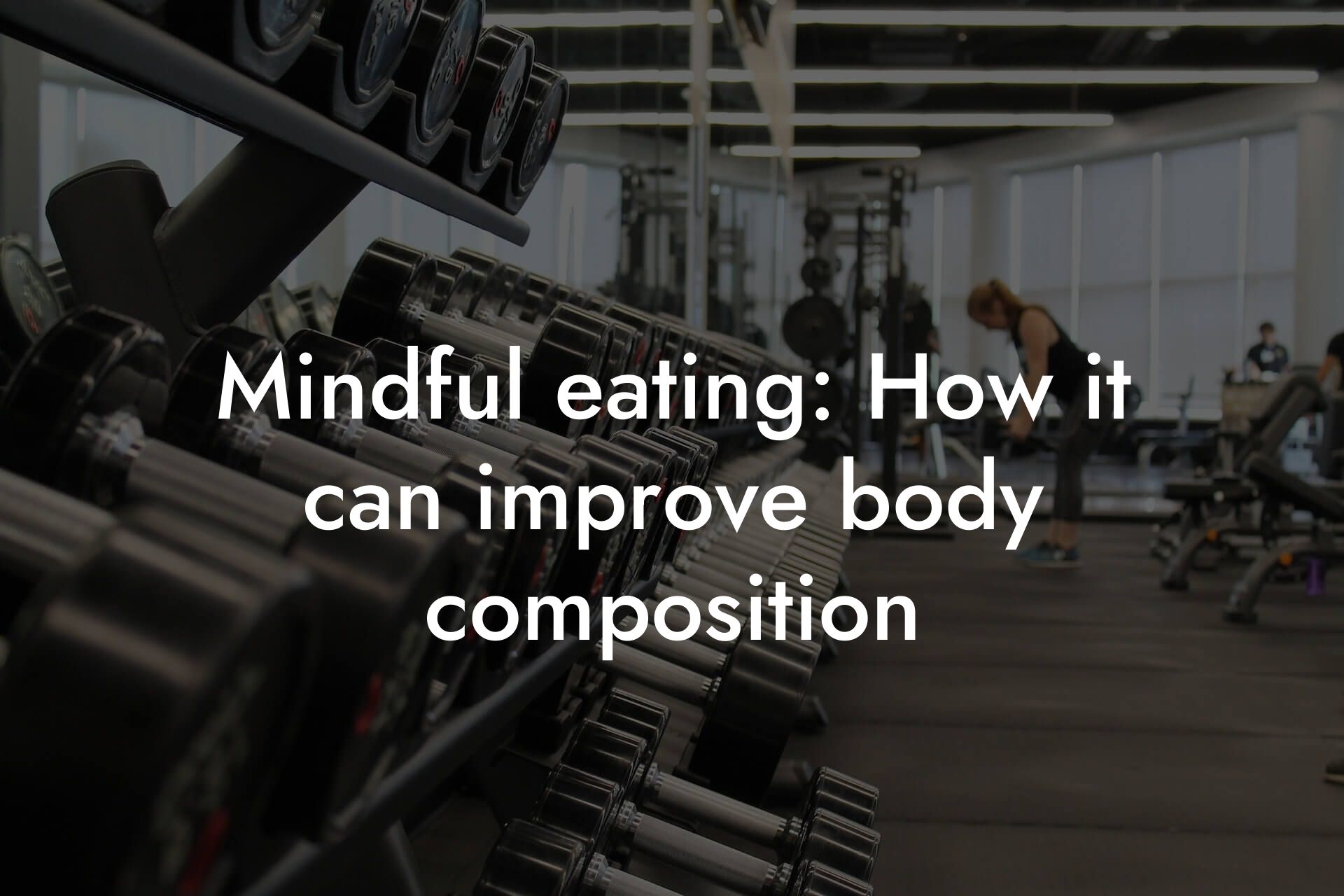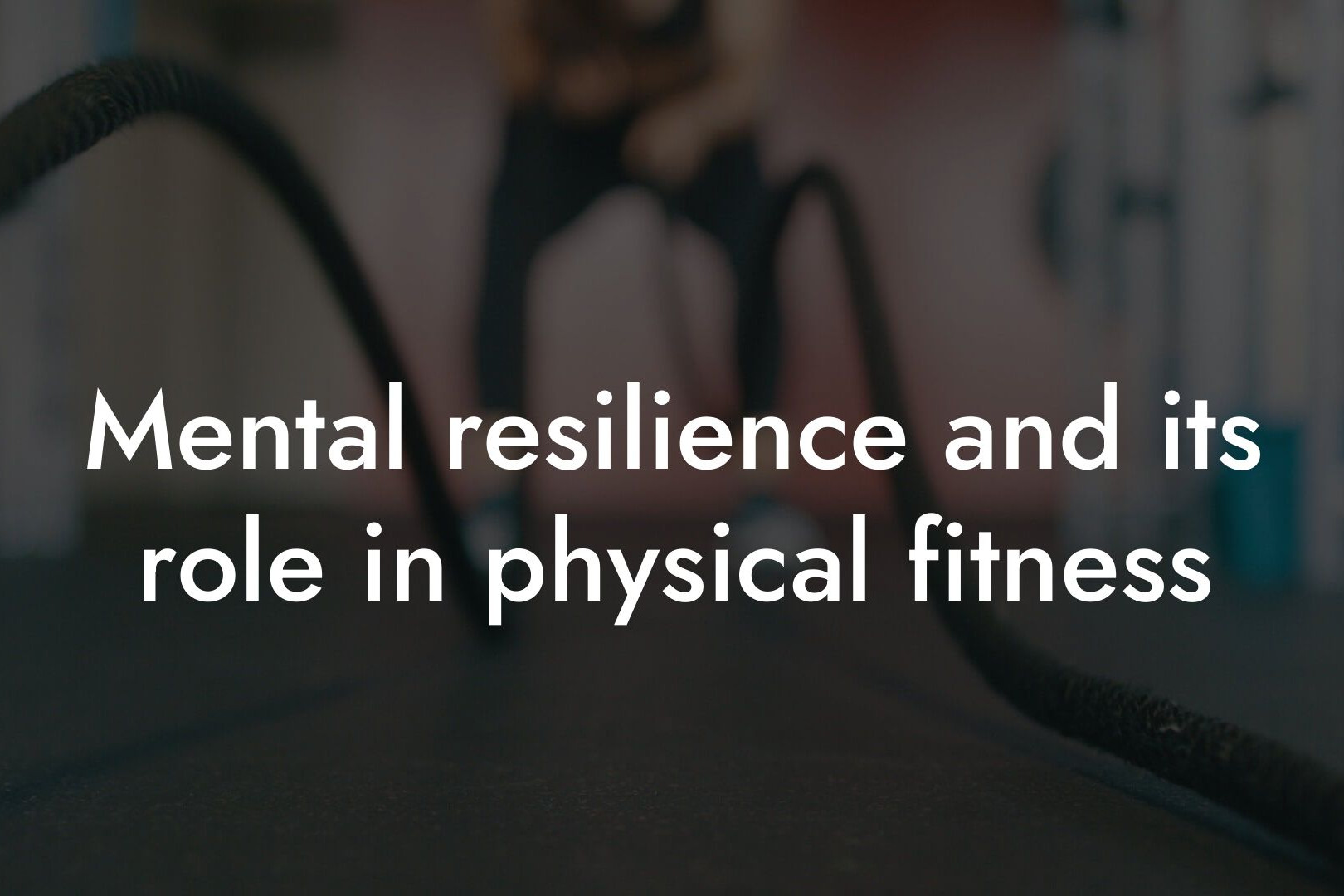As high-earning professionals, you understand the importance of setting and achieving goals in your career. However, when it comes to fitness, many of us struggle to stay motivated and reach our desired physique. One often overlooked yet powerful tool in achieving fitness goals is visualization. At Tano Performance Group, we believe that visualization is a crucial component of a successful fitness journey, and in this article, we'll explore the role of visualization in helping you reach your fitness goals.
Table of Contents
- What is Visualization?
- The Science Behind Visualization
- How Visualization Can Help You Achieve Your Fitness Goals
- Practical Tips for Incorporating Visualization into Your Fitness Routine
- How DEXA Scans Can Enhance Your Visualization Practice
- Overcoming Common Visualization Obstacles
- Frequently Asked Questions
What is Visualization?
Visualization is the process of creating mental images or scenarios that evoke a strong emotional response. In the context of fitness, visualization involves imagining yourself achieving your desired physique, performing a challenging workout, or overcoming a specific fitness obstacle. By vividly picturing yourself in these scenarios, you can tap into the same emotions and motivation that drive you to succeed in your professional life.
The Science Behind Visualization
Research has shown that visualization can have a profound impact on our brain's neural pathways. When we visualize an action or scenario, our brain processes it as if it were actually happening. This can lead to increased motivation, confidence, and even physical changes in our body. For example, a study published in the Journal of Sports Science found that athletes who visualized themselves performing a specific task showed significant improvements in their actual performance compared to those who did not visualize.
How Visualization Can Help You Achieve Your Fitness Goals
So, how can visualization help you achieve your fitness goals? Here are just a few ways:
• Motivation: Visualization can increase your motivation to work out and make healthy lifestyle choices. By vividly picturing yourself achieving your desired physique, you'll be more driven to take action and make sacrifices necessary to reach your goals.
• Confidence: Visualization can boost your confidence in your ability to achieve your fitness goals. When you imagine yourself succeeding, you'll feel more empowered to take on challenges and push yourself outside of your comfort zone.
• Focus: Visualization can help you stay focused on your goals and avoid distractions. By regularly visualizing your desired outcome, you'll be more likely to stay on track and make choices that align with your goals.
Practical Tips for Incorporating Visualization into Your Fitness Routine
So, how can you start incorporating visualization into your fitness routine? Here are some practical tips:
• Set aside time to visualize: Schedule a few minutes each day to sit quietly, close your eyes, and vividly imagine yourself achieving your fitness goals.
• Make it specific: Instead of simply visualizing a general outcome, make your visualization specific and detailed. For example, imagine yourself performing a specific workout, or achieving a certain body fat percentage.
• Use all of your senses: Don't just visualize the outcome – engage all of your senses. Imagine the feeling of your muscles working, the sound of your breathing, and the sensation of sweat dripping down your face.
How DEXA Scans Can Enhance Your Visualization Practice
At Tano Performance Group, we believe that having a clear understanding of your body composition is essential for achieving your fitness goals. Our DEXA scans provide a comprehensive picture of your body fat percentage, bone density, and muscle mass, giving you a clear starting point for your fitness journey. By incorporating this data into your visualization practice, you can create a more realistic and achievable vision of your desired physique.
Overcoming Common Visualization Obstacles
While visualization can be a powerful tool, many people struggle to incorporate it into their fitness routine. Here are some common obstacles and how to overcome them:
• Lack of time: If you're struggling to find time to visualize, try incorporating it into your daily routine, such as right before bed or during your lunch break.
• Doubt and negative self-talk: If you're struggling with negative self-talk or doubt, try reframing your visualization practice as a positive and empowering experience. Instead of focusing on what you can't do, focus on what you can achieve.
In conclusion, visualization is a powerful tool that can help you achieve your fitness goals. By incorporating visualization into your fitness routine, you can increase your motivation, confidence, and focus, and overcome common obstacles that stand in your way. At Tano Performance Group, we believe that visualization is an essential component of a successful fitness journey, and we're committed to helping you achieve your goals. By combining visualization with our comprehensive DEXA scans, you'll be unstoppable.
Frequently Asked Questions
What is visualization, and how does it relate to fitness goals?
Visualization is a powerful mental technique that involves using your imagination to create a mental image or scenario that you desire to achieve. In the context of fitness, visualization can help you to mentally rehearse and prepare for your workouts, overcome obstacles, and stay motivated to reach your goals. By vividly imagining yourself achieving your fitness objectives, you can tap into your subconscious mind and unlock your full potential.
How does visualization improve my motivation to exercise?
Visualization can boost your motivation to exercise by helping you to connect with your "why" – the reasons behind your fitness goals. When you vividly imagine yourself achieving your goals, you can tap into the emotions and desires that drive you. This can increase your enthusiasm and motivation to take action, making it more likely that you'll stick to your workout routine and make healthy lifestyle choices.
Can visualization really help me to lose weight and achieve my body composition goals?
Absolutely! Visualization can play a significant role in helping you to lose weight and achieve your body composition goals. By mentally rehearsing healthy habits and behaviors, such as preparing nutritious meals and engaging in regular exercise, you can increase your chances of success. Visualization can also help you to overcome emotional eating and develop a healthier relationship with food.
How often should I practice visualization to see results in my fitness journey?
Aim to practice visualization at least 2-3 times per week, ideally at the same time each day. Consistency is key, so try to make visualization a regular part of your routine. You can start with short sessions of 5-10 minutes and gradually increase the duration as you become more comfortable with the technique.
What are some common mistakes people make when trying to use visualization for fitness?
One common mistake is not making the visualization specific and detailed enough. Another mistake is not incorporating all of the senses – sight, sound, touch, taste, and smell – into the visualization. Additionally, some people may not be consistent with their visualization practice or may not believe in their ability to achieve their goals.
How can I use visualization to overcome obstacles and setbacks in my fitness journey?
Visualization can help you to anticipate and prepare for potential obstacles and setbacks. By mentally rehearsing challenging situations and visualizing yourself overcoming them, you can build resilience and develop strategies for staying on track. Visualization can also help you to reframe negative thoughts and emotions, and to focus on finding solutions rather than getting bogged down in problems.
Can visualization help me to improve my athletic performance?
Yes, visualization can be a powerful tool for improving athletic performance. By mentally rehearsing your sport or activity, you can improve your technique, increase your confidence, and enhance your overall performance. Many professional athletes use visualization as a key part of their training regimen.
How does visualization affect my brain and nervous system?
Visualization can have a profound impact on your brain and nervous system. When you visualize, you're creating new neural pathways and strengthening existing ones. This can lead to changes in your brain chemistry, hormone levels, and nervous system function. Visualization can also help to reduce stress and anxiety, and to promote relaxation and focus.
Can I use visualization to improve my body image and self-confidence?
Absolutely! Visualization can be a powerful tool for improving body image and self-confidence. By mentally rehearsing positive affirmations and visualizing yourself in a positive, confident light, you can rewire your brain to focus on your strengths and accomplishments. Visualization can also help you to develop a more compassionate and loving relationship with your body.
How can I use visualization to stay motivated during long workouts or cardio sessions?
Visualization can be a great way to stay motivated during long workouts or cardio sessions. Try visualizing yourself crossing the finish line, achieving your goals, or feeling strong and empowered. You can also visualize yourself overcoming challenges and pushing through difficult moments. This can help to distract you from fatigue and discomfort, and to stay focused on your goals.
Can I use visualization to improve my sleep and recovery?
Yes, visualization can be a powerful tool for improving sleep and recovery. By mentally rehearsing relaxation techniques and visualizing yourself in a peaceful, restful state, you can calm your mind and body, and prepare yourself for a restful night's sleep. Visualization can also help you to recover from intense workouts by reducing muscle tension and promoting relaxation.
How can I incorporate visualization into my daily routine?
Try incorporating visualization into your daily routine by setting aside a few minutes each day to practice. You can visualize first thing in the morning to set a positive tone for the day, or before bed to help you relax and unwind. You can also visualize during your lunch break or while commuting to work.
What are some common visualization techniques that I can use for fitness?
Some common visualization techniques include the "movie technique," where you visualize yourself achieving your goals like a movie playing in your mind; the "mind's eye technique," where you visualize yourself from a third-person perspective; and the "kinesthetic technique," where you focus on the physical sensations of achieving your goals.
Can I use visualization to overcome fear or anxiety related to exercise or fitness?
Absolutely! Visualization can be a powerful tool for overcoming fear or anxiety related to exercise or fitness. By mentally rehearsing positive outcomes and visualizing yourself feeling confident and capable, you can build confidence and overcome fear. Visualization can also help you to reframe negative thoughts and emotions, and to focus on finding solutions rather than getting bogged down in problems.
How does visualization impact my hormones and metabolism?
Visualization can have a profound impact on your hormones and metabolism. By mentally rehearsing positive outcomes and visualizing yourself achieving your goals, you can increase the production of hormones such as dopamine and endorphins, which can help to boost your mood and energy levels. Visualization can also help to regulate your metabolism and promote weight loss.
Can I use visualization to improve my nutrition and meal planning?
Yes, visualization can be a powerful tool for improving your nutrition and meal planning. By mentally rehearsing healthy habits and visualizing yourself preparing nutritious meals, you can increase your chances of success. Visualization can also help you to overcome emotional eating and develop a healthier relationship with food.
How can I use visualization to stay accountable and motivated with my fitness goals?
Visualization can be a powerful tool for staying accountable and motivated with your fitness goals. By mentally rehearsing your goals and visualizing yourself achieving them, you can increase your sense of responsibility and commitment. Visualization can also help you to stay focused on your goals and overcome obstacles and setbacks.
Can I use visualization to improve my overall well-being and quality of life?
Absolutely! Visualization can have a profound impact on your overall well-being and quality of life. By mentally rehearsing positive outcomes and visualizing yourself living a happy, healthy, and fulfilling life, you can increase your sense of purpose and direction. Visualization can also help you to reduce stress and anxiety, and to promote relaxation and focus.
How does visualization impact my self-talk and mindset?
Visualization can have a profound impact on your self-talk and mindset. By mentally rehearsing positive affirmations and visualizing yourself achieving your goals, you can rewire your brain to focus on your strengths and accomplishments. Visualization can also help you to overcome negative self-talk and develop a more positive, empowering mindset.
Can I use visualization to improve my flexibility and range of motion?
Yes, visualization can be a powerful tool for improving your flexibility and range of motion. By mentally rehearsing stretching exercises and visualizing yourself moving with ease and flexibility, you can increase your range of motion and reduce muscle tension. Visualization can also help you to overcome fear and anxiety related to exercise or movement.
How can I use visualization to overcome plateaus and stagnation in my fitness journey?
Visualization can be a powerful tool for overcoming plateaus and stagnation in your fitness journey. By mentally rehearsing new goals and challenges, and visualizing yourself overcoming obstacles and achieving success, you can break through plateaus and stay motivated. Visualization can also help you to reframe negative thoughts and emotions, and to focus on finding solutions rather than getting bogged down in problems.
Here are some related articles you might love...
- Overcoming mental barriers to weight loss
- Mindful eating: How it can improve body composition
- Mental resilience and its role in physical fitness
- The impact of chronic stress on body fat
- How meditation supports physical health
- The psychology of body image among professionals
- Body positivity vs body optimization: Finding balance
- Cognitive-behavioral strategies for fitness success
- How stress management improves body composition
Zak Faulkner
Zak Faulkner is a leading authority in the realm of physical health and body composition analysis, with over 15 years of experience helping professionals optimise their fitness and well-being. As one the experts behind Tano Performance Group, Zak has dedicated his career to providing in-depth, science-backed insights that empower clients to elevate their physical performance and overall health.
With extensive knowledge of DEXA technology, Zak specializes in delivering comprehensive body assessments that offer precise data on body fat, muscle mass, bone density, and overall physique. His expertise enables individuals to make informed decisions and achieve their fitness goals with accuracy and confidence. Zak’s approach is rooted in a deep understanding of human physiology, combined with a passion for helping clients unlock their full potential through personalised strategies.
Over the years, Zak has earned a reputation for his commitment to excellence, precision, and client-focused service. His guidance is trusted by top professionals who demand the best when it comes to their health. Whether advising on fitness programs, nutritional strategies, or long-term wellness plans, Zak Faulkner’s insights are a valuable resource for anyone serious about taking their health and fitness to the next level.
At Tano Performance Group, Zak continues to lead our Content Team revolutionising how professionals approach their physical health, offering unparalleled expertise that drives real results.




